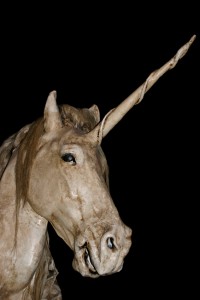Creativity: Learning to See
Jorge Luis Borges once wrote a story about a unicorn that no one saw. The unicorn grazed widely in the town where it lived and made no effort to hide itself. No one saw the unicorn because no one expected to see a unicorn. We see what we know, Borges seems to say. If we don’t know that something exists, we can’t possibly see it. It’s invisible.
I recently bought a car and decided to get it in flamenco red. I liked the color but I also thought it was unique. I hadn’t seen any flamenco red cars. As soon as I ordered the car, I started seeing flamenco red cars everywhere I looked. I hadn’t seen them before because I didn’t know they existed.
If we only see what we know, we’re going to miss a lot of reality. Worse, we’re going to miss many opportunities to be more creative. If we believe that politicians are liars, then every time we see a newspaper article about a lying politician, we’ll see it and register it. If we see an article about a politician telling the truth, we may just miss it altogether. We didn’t know that such a species existed. We’re missing a chunk of reality and an opportunity to open our minds and see and do things differently.
How do you learn to see what you don’t typically see? Here are some pointers:
- Ask your spouse — he or she will see the world somewhat differently. Ask him/her what you’re missing. Suellen says I never see plants. On the other hand, she never sees ’57 Chevys.
- Make a point of it — when you drive to work tomorrow, make a point of seeing something different. You’ll be surprised what you’ve been missing.
- Compare pictures — look at a picture and write down what you see. Then ask a friend (or friends) to do the same. Then compare what you’ve written. In Thinking Fast and Slow, Daniel Kahneman writes that Chinese student see pictures very differently than American students. I’ll write more about that soon.
- Learn to draw — this really gets you to see.
As you learn to see more fully, you should also get more creative. You’ll see connections — and opportunities — that you might have missed before. I sometimes wonder if Jorge Luis Borges was so creative precisely because he sees the world so differently. After all, he was blind.
See more in the video.

Good one on creativity! Can’t wait to see your red car from our window! ted